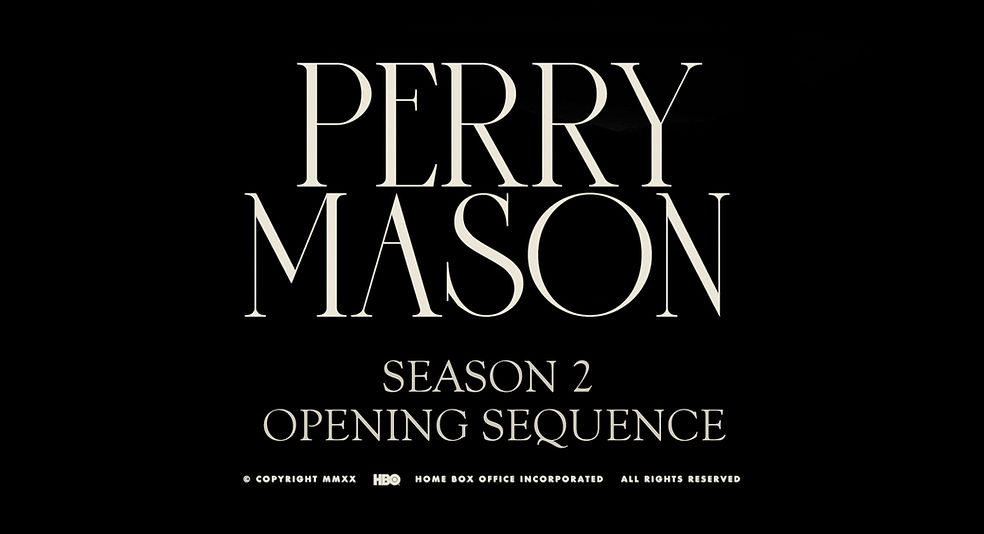

If there are advantages to being an outsider, it lies in the fresh perspective it lends me as a Set Designer, allowing me to perceive the history of LA anew. This unique standpoint also allows me to fully immerse myself in Perry's imposter experience.
Production Designer Keith Cunningham's comprehensive research brought to light concealed aspects of Los Angeles. Concurrently, my central objective this season entailed utilizing digital design tools to encapsulate the historical era's antiquity and evoke the noir atmosphere of the narrative. Throughout the design process, we remained consistently cognizant of the scale inherent to that specific period. This consideration assisted us in harmonizing our set construction with historical locations. In addition, we were fortunate to have the chance to utilize the historic WB Ranch before its upcoming extensive renovation. During breaks, our Set Designers would stroll around the ranch. It was during these moments that I had the privilege of learning more about the history of Los Angeles from seasoned set designers like Paul Sonski, Jane Wuu, and Greg Papalia. The tranquility of the WB ranch established a unique connection that allowed us to reflect upon the early days of the city of Los Angeles.

THE
COURTROOM


During the early design phase, it was evident that the courtroom would be the main look of the show. I had the honor of adapting the original courtroom design from season one, crafted by renowned Set Designer Randall Wilkins. Production Designer Keith Cunningham and I made several adjustments to the set walls and introduced new textures and a new ceiling. My second task was to transform the courtroom into a versatile space, capable of representing small, medium, and large courtrooms for various scenes, including the main trial.

THE BIG CONE









Beyond socioeconomic disparities, I find satisfaction in designing for non-normative communities, encompassing racial and sexual minorities. The architecture of 1930s Los Angeles provided a glimpse into impending social movements, as exemplified by the regrettably excluded set of the "Big Cone" ice cream stand. I feel this symbol not only foresaw LA's emerging queer scene but also embodied the city's inclusive essence which is the quality that has made LA feel like a second home to me.

DELETED
SCENE

SCALED SLA 3D PRINT
4
"
1



* Photo credit: Joanna Bush
THE GAMBLING SHIPS




During the initial design phase, I relished working on conceptual set development while scripts were still in progress. I received one-day design challenges to swiftly present potential set looks to the writers and showrunners. These challenges aimed to effectively convey the set's appeal and scale to the story creators as they crafted events and characters for the season.
One enjoyable project involved designing gambling ships. Initially, we contemplated constructing partial gambling ships on two sides of a barge atop a body of water. Another intriguing challenge was pitching a one-shot opening sequence of a location to the writers. I spent less than a day surveying and modeling the location, then quickly added figures and camera movements. Ultimately, we secured the shot for the season's opening.

THE OPENING

CLICK HERE FOR SOUND
OTHER SET DESIGN WORK


ART DEPARTMENT CREW
PRODUCTION DESIGNER
KEITH CUNNINGHAM
SUPERVISING ART DIRECTOR
IAN SCROGGINS
ART DIRECTOR
MICHAEL MANSON
BRITTANY BRADFORD
MARK ROBERT TAYLOR
ASSISTANT ART DIRECTOR
LINIA MARIE HARDY
KATELYN BUDKE
CONCEPT ILLUSTRATOR
JOANNA BUSH
SET DESIGNER
HOGAN LEE
KATIA NAJERA
GREG PAPALIA
JANE WUU
PAUL SONSKI
GRAPHIC DESIGNER
STEPHANIE CHARBONNEAU
KAREN SORI
ART. DEPT. COORDINATOR
JILL SALAVER